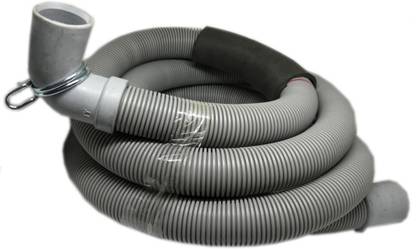There are many reasons you should consider buying new washing machines or upgrade from an older model. One reason is that it makes your clothes more hygienic and efficient. There’s also the promise that it will decrease the time it takes to wash your clothes. This means you won’t have to spend as much time looking for items while still being in a position to remember things at home, like kids’ sports practices. Certain TV ads go farther by suggesting that specific brands can make people feel more comfortable when they do their laundry; though this can depend greatly on individual preferences as well as the features specific models have however, the fact is that these machines work best when they’re installed correctly.
Connectors for Washing Machine Drain Hose
There are two ways to connect the drain line of your washing machine. One option is by installing the pipe vertically, or suspend it above an open slop sink to allow for the easy disposal of wastewater.
1. Slop Sink Connection
There are a variety of methods to empty your washing machine however, the slop-sink method is the most efficient. This design poses many risks and potential problems with it not just for water that backs up into its filter due to an air gap between the two water hoses will connect to the water at some point during usage and also due to the fact that any force generated by the spin cycle can cause damage to something vital inside the device if there’s not enough space below deck on the retrieve models, or create pressure waves that reverberate through the plumbing’s ugliest parts until the entire system is destroyed.

2. Pipe with Dedicated Drain Pipe
A separate connection may be a better choice for the drain line from your washer. The pipes will drain water from your washing machine more effectively than drains for kitchen sinks. They’re also bigger than standard plumbing and aren’t likely to get blocked or drained as quickly when they are connected directly beneath our dishwasher. They can also be found at higher levels. This is because there is less danger when using these pipes , instead of joining them into a single indoor line, which is connected through an opening (or door).
3. Maintenance of the Drain Hose
Connections to the hose may get complicated and confusing, but when you set it in a proper way, your house will be cleaner for longer! You should also ensure that the hose and attachments are maintained clean. There are filters that can be fitted to drain pipes at each end. If you’re in need of create your own, you can do it from socks/pantyhose. This will keep dust and lint from building within the pipes.
Common Materials for the Washing Machine Drain Hose
1. Stainless Steel Braided Drain Line
The material is not as flexible or rigid when it is called stainless steel. It’s wrapped in plastic with a coated mesh. It is able to withstand cuts and twists as well as burst more easily than any other material that is available. Certain brands label their products as “burst-free” to indicate how much thought was given to this specific aspect.
2. Rubber Drain Hose
Rubber hoses are a great option to more expensive plastic and metal hoses. They’ve been in existence for many years. These models are made with polyester mesh that is braided and rayon to increase toughness. There’s a need for one that has the word “reinforced” if it’s been exposed to high-use. These models are made to order so you do not need to design these models.
For more information, click flexible drain hoses